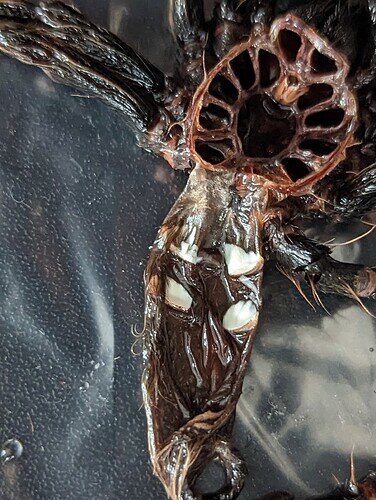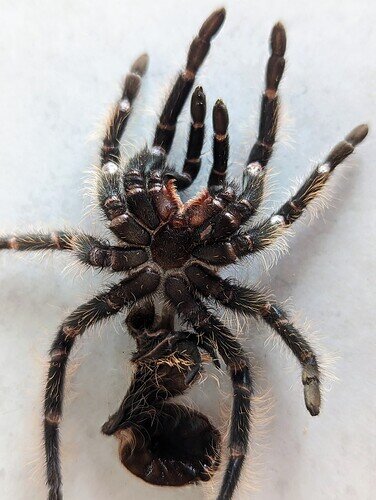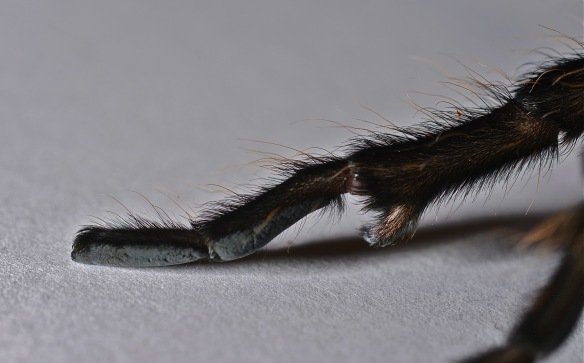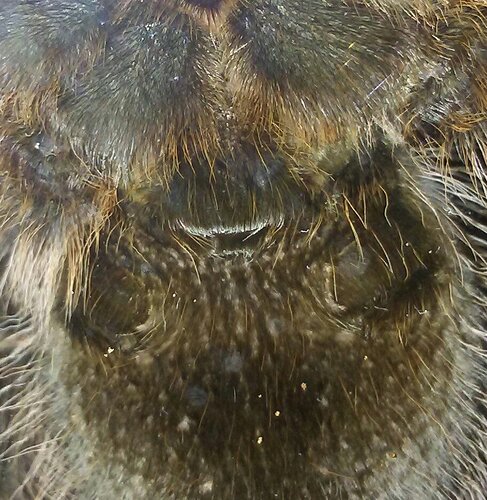My curly hair T molted this morning. Was wondering if anyone could help me sex it. I think it’s a male but could use another opinion. Thanks.
I don’t work with spiders, I just admire them. Let’s see if I can get you some help. Calling people with much more knowledge than me: @spottedbull , @mblaney , @jawramik , @frogdaddy will either know or know someone who will. ![]()
Ok thank you much appreciated ![]()
Going out on a limb here. I say it’s a male. I don’t see a flap or pocket for eggs. I’m going to find a picture of a female molt and post it if I can……
But I could be wrong of course! Lol! ![]()
![]()
I don’t know. Now that last picture looks like a female. I am imagining I see a set of “lips”.?
@spottedbull @jawramik What do you guys think? ![]()
Ya I’m not too sure on this either. Hopefully someone can chime in with a better opinion than us ![]()
![]()
I’m a newbie in the arachnid world & I’ve never kept tarantulas. I’m quite curious though! ![]()
Kinda hoping @spottedbull will assist
Im gonna have to research that a little more. Thats one aspect Im not real certain about.
Ohh ok I thought you were ![]()
Sorry about that! Maybe @jawramik can help! I’m sure someone will be able to help…… ![]()
@frogdaddy might have some insight as well.
I know nothing here, just trying to help
…
Tibial hooks: Male Curly Hair tarantulas develop tibial hooks on their front legs. These specialized structures are used for mating and can be visible as small hooks on the legs. However, the presence of tibial hooks is only reliable in mature males and can be challenging to spot on the molt.
The pinkish projecting segment protruding from the third to last leg region is a tibial hook. — One of those bittersweet animal-owning moments: My first mature male curly hair tarantula (Brachypelma albopilosum) | Things Biological
Ok thank you @eaglereptiles @alexexotic92 I don’t see any signs of the pinkish protrusions on your T’s pictures. Great job on your pictures btw! So maybe you have a younger t? Someone surely will see this post and respond! Lol! I am still leaning toward male…… ![]()
![]()
Ya I’m about 95% sure it’s a male but I wanna be 100 ![]()
![]() I really appreciate you reaching out to others for me during this. Means a lot and thanks everyone else as well.
I really appreciate you reaching out to others for me during this. Means a lot and thanks everyone else as well.
I’m gonna add one more person to take a look, too. @wrai keeps a lot of T’s as well.
Thanks, @spottedbull. I guess I’m just late to the party. As far as T. albo go, @alexexotic92 , it’s very easy to determine females and males apart if you know what to look for, based on tibial hooks and swollen emboli (boxing gloves) on mature males, and in the case of the females, around the ventral area, there’s a very pronounced “furrow” with contrasting white hairs above it. Check out this link to an Arachnoboards page with some good photo examples like this one, but based on what I can see, the molt is twisted at the carapace, because we can see the book lungs facing up where the tarantula exited the carapace, and I’m not able to see the area we’re looking for. If I missed it I apologize, about how big is this tarantula? And how does it look since this molt, can you get a good shot of the front legs and pedipalps?
I have nothing useful to add about sexing spiders. I just gotta add that I’m enjoying learning more about this, it’s fascinating. And I’ve really got to add that it’s great to see again how community members here help people learn! ![]()
![]()






